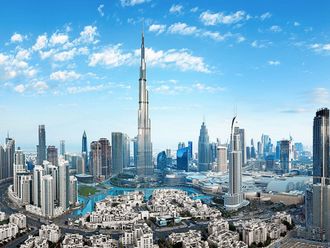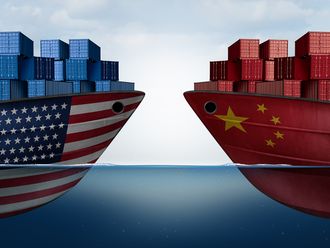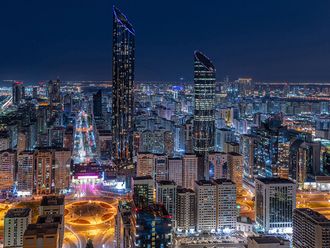There was good news, bad news and unusual news last week. Walt Disney Co finally won Beijing's approval to build a theme park in Shanghai.
The United States slapped unfair trade practices and anti-dumping charges on China on products ranging from glossy magazine paper to salts and steel pipes.
And renewable energy stocks had a joyride for five straight days on speculation that US President Barack Obama's visit to China from November 15 to 18 will speed up Beijing's efforts to go clean.
Most green technology-related stocks, such as nuclear and wind energy, rose last week with all 10 nuclear power companies' shares advancing.
Obama's visit will be tied to sustainable energy technologies and according to analysts in Shanghai, this will give plenty of room for investors to speculate on related stocks.
This, however, will be no fly-by-week speculation. Green scrips are likely to hit gold on the bourses given the mind-boggling prospects of China's green revolution.
Until recently, horror statistics of China's pollution dominated the headlines. Now, the industries are working silently to snatch a lion's share of the multi-trillion-dollar energy technology market.
Enormous funds
According to the China Greentech Report 2009, a meaty document published recently by a group of Western companies, the Chinese market for clean technology is poised to grow $500 billion to $1 trillion annually.
And like everything else in China, it is the government which is driving this sector with formidable determination, throwing in enormous funds, incentives and regulations.
Moreover, Beijing sees renewable energy not from the moral or environmental standpoint, but as an economic boon. Chinese officials predict that building a new global energy industry over the next half century will generate more business than any other sector and they want a hefty chunk of it.
This sounds plausible given that China had vowed to cut its energy consumption per unit of GDP by some 20 per cent from 2005 to 2010. It has also set a target of using renewable resources to meet 40 percent of its energy needs by 2050.
From setting up "one coal fired power station a week," China has moved to installing a "one-megawatt wind turbine every hour."
China's installed wind power capacity has doubled each of the past four years, and is likely to exceed the 2020 target next year, a decade ahead of schedule.
So fast have windmills been built that the national grid cannot handle all the energy they generate, and much is wasted. A combination of subsidies and tariffs and a rule obliging power companies to buy renewable energy gave local manufacturers a headstart.
Companies like Goldwind are now turning multinational by building wind farms in Texas. On the other hand, AES Corp, an American power producer, agreed to sell stock and a 35 per cent stake in its wind-power business to China Investment Corp for $2.2 billion to raise cash for expansion. The move has generated some controversy in the US.
China's green-turbined policy engine has also turned to the energy efficient automobile sector with a vengeance. Two Chinese firms, BYD Auto and Qingyuan are competing to bring an all-electric car to market this winter. Shanghai Automotive Industry Corporation Group, China's largest automaker, plans to begin manufacturing its own brand of fuel-saving cars in 2010.
Chongqing Chang'an Automobile Group is creating a new manufacturing base which will produce 300,000 alternative energy cars after 2012.
As auto companies go green at breakneck speed, their output could well exceed China's target of 1 million green cars by 2012.
Lithium Power
The development of the electric car sector has also opened the floodgates for the lithium-ion battery industry. As automakers shift from gasoline to voltage, lithium battery makers see enormous scope to expand business.
The market for lithium-ion batteries will be worth 15 billion yuan by 2012. Ningbo Shanshan Co, a leading manufacturer of material for lithium-ion batteries, climbed 3.32 per cent last week. Analysts say these companies have a green-gold future on the bourses.
Solar power is the next big thing on the agenda. Chinese and foreign venture capital firms are investing heavily in the manufacture of solar panels for export.
Last week, the government gave approval to an US-based company, First Solar Inc, to develop a colossal system of panels over the coming decade to produce 2 billion watts of electricity in the desert of Inner Mongolia. Reports say the Chinese photovoltaic market is poised to be the biggest in the world.
The markets too are quick to sense the massive potential of these futuristic companies. In the words of Todd Glass, an energy lawyer in San Francisco, "The rest of the world doesn't even realise that we are very likely ceding the next generation of energy technology to the Chinese."
The writer is a freelance journalist based in Shanghai, China












